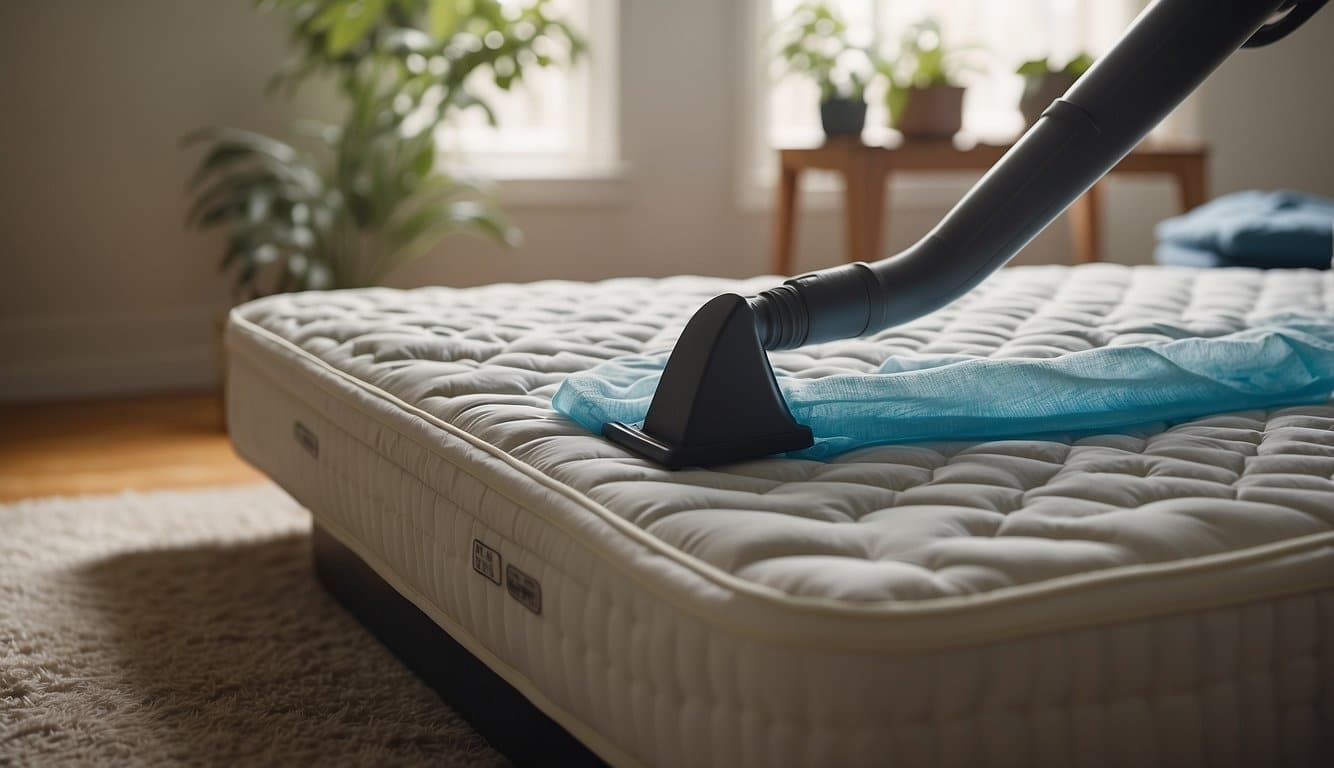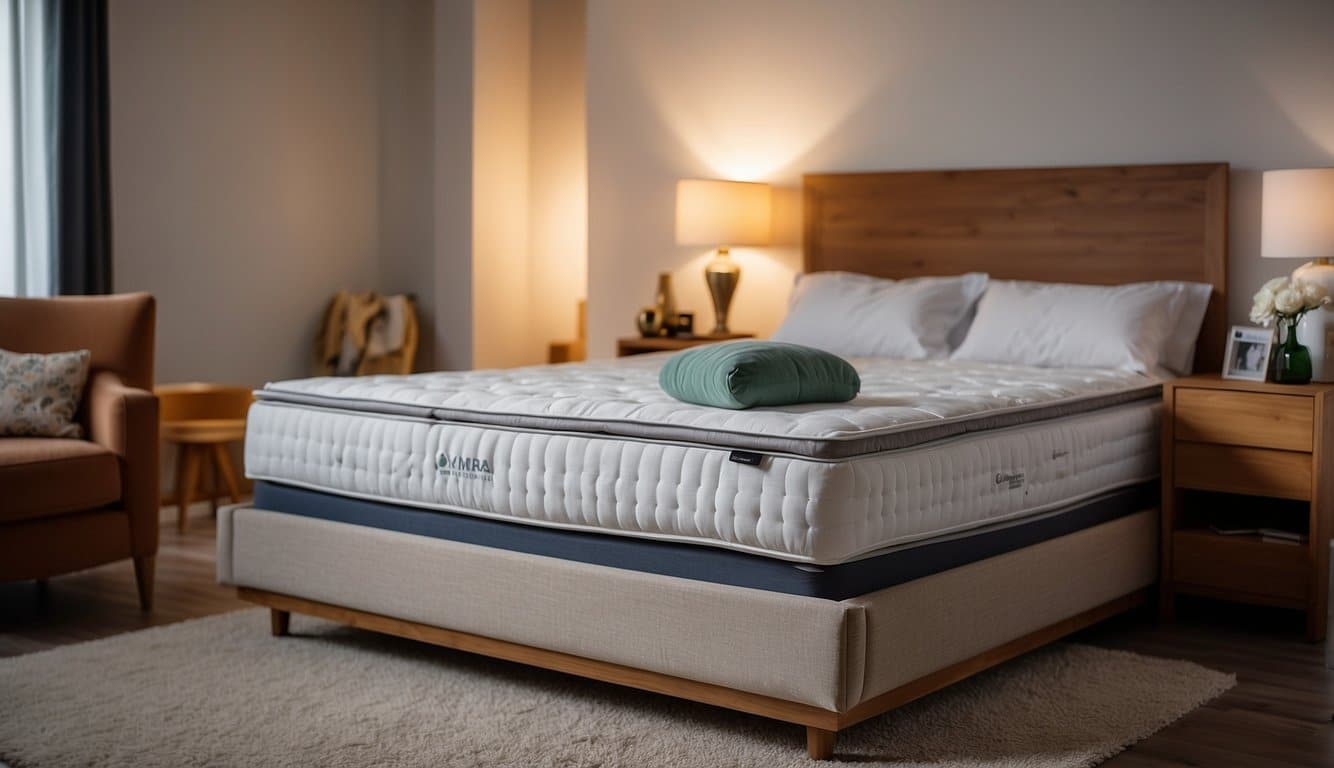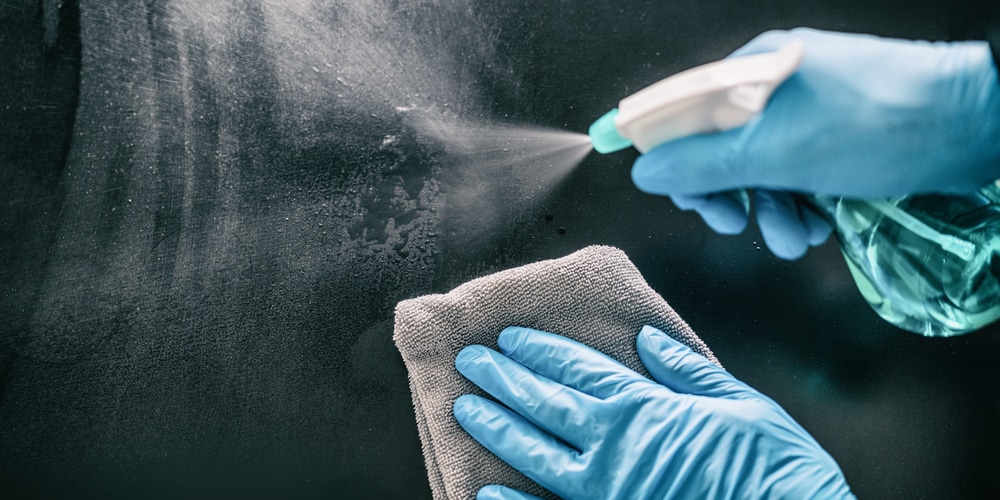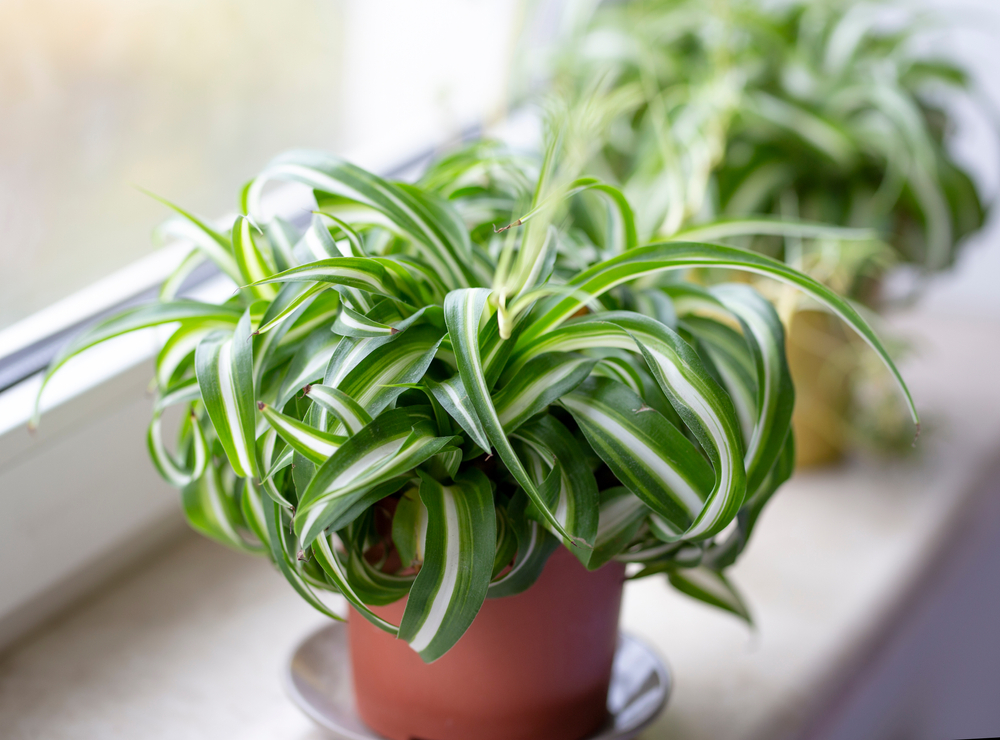How to ID Bed Bug Infestations
Before launching your quest against these pesky intruders, it’s crucial to confirm their presence.
An accurate identification can save you time and ensure that you’re fighting the right battle.
Spotting Signs of Bed Bugs
Bed bugs are masters of hide-and-seek, but they do leave clues of their soirees:
- Bite marks: You might notice red, itchy welts on your skin.
- Blood spots: Tiny blood smears on your sheets are tell-tale signs of bed bug feasts.
- Dark spotting: Look out for their excrement, which can look like small, dark speckles on your mattress.
- Eggs and shells: Tiny, pearl-like eggs and shed skins in your bed’s nooks and crannies can announce an infestation.
- Live bugs: Spotting the actual brownish insects, although shy, seals the deal.
Where to Check for Bed Bugs
Equip yourself with a flashlight and magnifying glass, and explore these common hideouts:
- Mattress & Bed Frame: Inspect the seams, tags, and crevices, especially if your bed is a frequent snack bar for these critters.
- Furniture: Dive into the abyss of your couch and chair seams, under cushions, and in the joints of drawers.
- Curtains and Carpets: Investigate the folds and underlay, where bed bugs might be having a field day.
- Electrical Outlets & Appliances: Unlikely venues that can turn into luxury condos for bed bugs.
Preparation for Bed Bug Treatment
Proper preparation is the first critical step to effectively launching your counter-attack against bed bugs.
Let’s get ready to rumble and squash those pesky critters with precision!
Decluttering Your Space
Begin by eliminating clutter to leave bed bugs with fewer places to hide:
- Inspect: Check all areas where clutter tends to accumulate, such as stacks of clothing, magazines, and boxes.
- Dispose: Toss out anything you no longer need, always double-bagging items that may be infested.
- Organize: Store essential items in sealed plastic bins temporarily to reduce further bed bug exposure.
Washing and Containment
Now that your space is decluttered, let’s move on to laundering and containing potentially infested items:
- Launder:
- Place bedding, curtains, and clothes into sealed bags and wash them at the highest temperature recommended on the care labels.
- Use a high heat dryer cycle for at least 30 minutes to kill bed bugs effectively on these items.
- Contain:
- For items that cannot be washed, consider using a portable bed bug heater to reach all life stages of bed bugs.
- Seal non-washable items in plastic bags and leave them isolated for several weeks to starve any remaining insects.
Choosing Treatment Methods
When you’re facing a bed bug infestation, picking the right treatment method is like choosing the right hiking gear – vitally important.
Let’s unpack your options to navigate this trail with precision.
Chemical Treatments
What to Look For:
- Look for EPA-registered pesticides labeled specifically for bed bugs.
- Prioritize products with a long-lasting effect to prevent reinfestation.
Quick Tips:
- Read labels to ensure the chemical is intended for indoor use and safe for your furniture.
- Combine with other methods to improve effectiveness.
Non-Chemical Treatments
Heat Treatment:
- Bed bugs are sensitive to heat. Expose your items to temperatures of about 120°F (49°C) to kill bed bugs at all life stages.
- Use a clothes dryer or a steam cleaner on your mattress for immediate impact.
Freezing Treatment:
- Items can be placed in a freezer set to 0°F (-18°C) for a minimum of four days.
- Seal items in plastic bags before freezing to avoid moisture damage.
Professional Exterminator Options
Selecting a Professional:
- Seek professionals with a history of successful bed bug elimination.
- Ensure they offer a comprehensive plan and follow-up treatments.
What They Offer:
- Inspection services to determine the extent of the problem.
- Integrated Pest Management (IPM) techniques, combining chemical and non-chemical treatments.
- Guarantee a certain degree of bed bug extermination success.
Post-Treatment Cleaning and Monitoring
After tackling a bed bug infestation, it’s essential to thoroughly clean your space and remain vigilant to ensure these pesky critters don’t return.
Cleaning After Treatment
- Laundry: Wash all your fabrics (bedding, curtains, clothes) in hot water and dry them on the highest dryer setting.
- Vacuuming: Go over every inch of your floors, mattress, and upholstered furniture with a vacuum to remove any lingering bed bugs and eggs.
Ongoing Monitoring Strategies
- Interception Devices: Place these under the legs of your bed to trap bed bugs trying to climb up, so you can monitor for any new activity.
- Visual Inspections: Regularly inspect your bed frames, mattresses, and box springs, especially the seams and crevices, for signs of bed bugs.
- Professional Follow-up: Schedule follow-up visits with your pest control professional to ensure that the treatment was successful and to get advice on preventive measures.
Preventive Measures
Before you find yourself in a scratchy situation, let’s buzz through some effective tactics to keep those pesky bed bugs at bay.
Bed Bug Proofing Your Home
- Inspect Regularly: Be your own detective—check your mattress, furniture, and crevices for any sign of these critters.
- Protect Your Mattress: Slip on a bed bug-proof encasement to keep the bugs from making a home in your bed.
- Declutter: Reduce hiding spots by keeping your place tidy and possessions off the floor.
- Seal Cracks: Give no quarter! Seal spots where bed bugs could enter from neighboring units or outdoor spaces.
Travel Precautions
- Bag It: Use sealable bags for your clothing when using dressers or closets in hotels.
- Scan Your Room: Upon arrival, stash your bags in the bathroom and inspect the bed and furniture before settling in.
- Hot Laundry: After your journey, launder your clothes in hot water to kill any potential stowaways.
Frequently Asked Questions
Bed bugs are unwelcome guests in any home, and effectively sending them packing is often a high priority. In this section, we’ll buzz through the most effective DIY strategies that you can deploy against these tiny critters.
What are the top home remedies to send bed bugs packing?
- Washing your bedding at high temperatures can kill bed bugs.
- Sealing cracks and crevices denies bed bugs their hiding spots.
What’s the quickest method to zap bed bugs for good?
- A thorough vacuuming session, especially along the seams of your mattress, can significantly reduce the bed bug population.
Can a DIY approach be enough to rid my mattress of bed bugs?
- Encasing your mattress and box spring in a protective cover can trap and starve bed bugs already inside.
- Regularly inspecting and cleaning your bed frame and headboard is key.
What natural strategies work best against a bed bug invasion?
- Diatomaceous earth can be sprinkled around bed bug-prone areas to dehydrate and kill them.
- Essential oils, like tea tree oil, may deter bed bugs when applied to affected areas.
Is there a way to tackle bed bugs in a single day without calling the pros?
- You can attempt a single day onslaught using a combination of vacuuming, steam cleaning, and bed bug sprays, though complete eradication is challenging.
What are effective, budget-friendly solutions to terminate bed bugs?
- Store-bought bed bug traps and monitors can help you assess the level of infestation.
- Utilizing a combination of heat treatment (like steamers) and non-chemical approaches can be cost-effective.
Last update on 2025-04-26 / Affiliate links / Images from Amazon Product Advertising API





